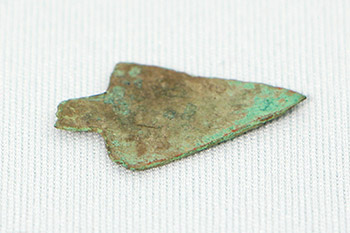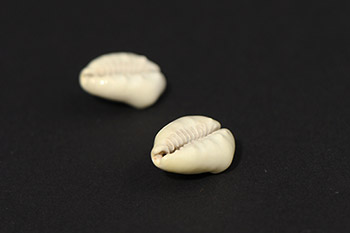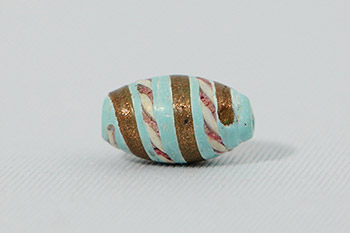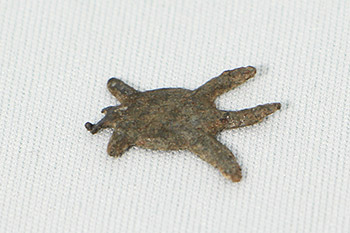Artifacts of The Forks National Historic Site
The Forks National Historic Site
Highlights from the collection
The Forks National Historic Site has a collection of over 190,000 recovered artifacts. The recoveries were almost exclusively made from two locations based on evidence that suggested they were likely where Fort Gibraltar I and II had once been situated. Parts of these areas are now occupied by the playground, and the north point interpretive node behind the Oodena Celebration Circle. The bulk of excavations at The Forks National Historic Site occurred in 1984 and 1989 to 1993.
Projectile point

Excavation year: 1984
Material: Ferrous metal
Registration number: 21k27k1-1
Projectile points, or arrowheads, were a necessary tool in the Woodland Period. These points were used for hunting purposes by the First Nations groups living in this area from 200 BCE to 1750 CE. Hunting was an essential part of life on the prairies for the people populating this land. All parts of the animal hunted would be used, from the hides to the bones, to the meat.
Megis (money cowries)

Excavation year: 1990
Material: Shell, fauna
Registration number: 21K54D6-2
These megis or cowries shells (Monetaria moneta), originating in the Indonesia-Pacific region, are considered sacred by the Anishinaabe. In the Anishinaabe creation stories, Gitchi Manitou (the Creator) took the four parts of Mother Earth (earth, wind, fire, and water) and blew them in the megis shell to create the Anishinaabe. On the Anishinaabe’s great migration from the east, the megis shell rose up out of the water to show the people where to stop and live. These shells are from the Fur Trade Period (1800 to 1900 CE).
Glass bead

Excavation year: 1990
Material: Glass
Registration number: 21K54R9-3
Glass beads, imported from Europe, were a popular fur trade item for the First Nations and Métis people. Beads were used to decorate items of clothing and accessories and were made into earrings, necklaces and hair adornments. First Nations and Métis people would bring in their furs to trade with the company and in return ask for glass beads.
Pendant

Excavation year: N/A
Material: Grey metal
Registration number: 21K57Q4-3
Shaped like a turtle, this pewter pendant may have been used as an earring or part of a necklace. In Indigenous creation stories, a flood destroyed the old world. The turtle offered itself (and ultimately its life) to bear the weight of the new world, now known as North America. Indigenous groups worship the turtle for its sacrifice. This pendant is from the Fur Trade Period.
Related links
- Date modified :